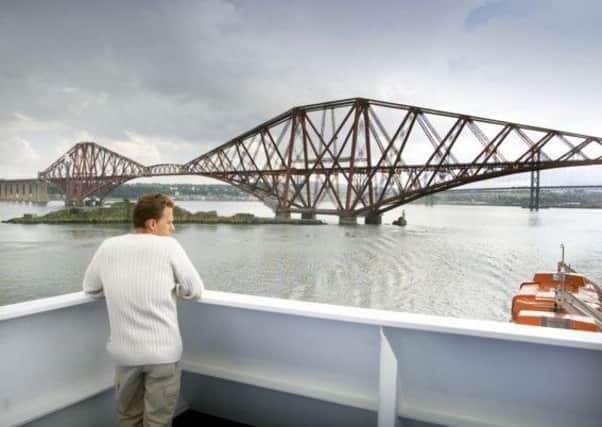Sustainable solutions for global freight


The Firth of Forth is one of Scotland’s principal gateways for the moving of freight – not least as it is home to the Rosyth –Zeebrugge ro-ro Ferry; Scotland’s sole direct freight ferry service to mainland Europe.
It is a bustling centre of commerce, featuring a number of ports and harbours importing and exporting a wide variety of freight. Rosyth is home to the naval dockyards and the Zeebrugge ferry terminal; oil and freight containers pass through Grangemouth; Leith – Edinburgh’s harbour – is still a busy port; Methil has a traffic in timber, while Burntisland focuses on marine fabrications.
Advertisement
Hide AdAdvertisement
Hide AdIn total 27 million tonnes of bulk freight and over 250,000 freight containers move through the estuary each year. Meanwhile, nearby Edinburgh airport – Scotland’s busiest – d eals with some 43 thousand tonnes of air freight each year.
The Firth of Forth then, is already a major logistics gateway to and from mainland Europe, but it is vital that the Forth remains competitive, and above all sustainable, if it is to continue to contribute towards the economy of the nation , with all that implies in terms of future revenue, jobs and economic prosperity.
SEStran is a key partner in WEASTflows – a €9 million EU funded project involving 22 European partners, which to aims to improve and enhance freight logistics in north-west Europe and encourage a move from an over reliance on road haulage to the more sustainable modes of rail, short-sea shipping and river transportation.
Freight haulage is central to health of the European economy, but everywhere it is over dependent upon road transportation. This causes major problems of congestion, pollution and – in a time of rising oil prices – increasing costs.
WEASTflows seeks to find sustainable solutions to the movement of freight using multi-modal supply chains that involve the carriage of freight by more than one transport mode. These can include road, rail, inland waterways and shipping. The objective is to get freight off-road as far as possible and onto modes that are less expensive, less polluting and more sustainable. It also seeks to make road transport itself more sustainable through careful use of maximising loading, eliminating empty running vehicles, ICT like load tracking and using co-operative methods between freight forwards to minimise waste.
WEASTflows is pioneering the concept of sustainable freight logistics gateways. These are defined as entry and exit points for freight within a region which make an important economic contribution to the region and beyond. They include road, rail, air and maritime links with the regional hinterland and the wider transnational supply chain.
Sustainable freight logistics gateways have already been established in a number of locations in partner countries including; the Limerick-Shannon Gateway region and the Atlantic Gateway in Ireland, the Seine Gateway and the London Thames Gateway. Other logistics hubs in north-west Europe such as Liverpool and Manchester, Luxembourg, Duisburg and Mannheim are being scrutinised for their potential for development as sustainable gateways and with a view to producing a best practice guide for future developments.
The Firth of Forth already meets many of the criteria for potential development as a sustainable freight logistics gateway, and SEStran is working within WEASTflows to see whether the model offers a way forward for optimising throughput using sustainable modes that maximise the amount of freight moved in the most cost effective way, while minimising the negative consequences, such as traffic congestion and pollution.
Advertisement
Hide AdAdvertisement
Hide AdThe gateway concept relies on regions using a toolkit of ideas to assess how far they are currently meeting the characteristics of a sustainable gateway in terms of their socio-economic structure, governance, existing infrastructure, accessibility and environmental quality.
Concepts such as the sustainable freight logistics gateway have the potential to safeguard the economic future of the Firth of Forth, while ensuring that it retains its iconic natural beauty.
SEStran is committed towards working with partners like those in WEASTflows, pioneering innovative thinking that will ensure a prosperous future for the region.
• Councillor Russell Imrie is chair of SEStran www.sestran.gov.uk
SEE ALSO